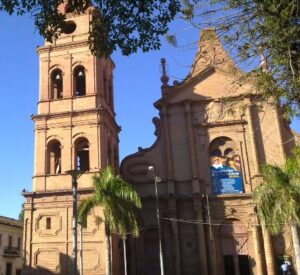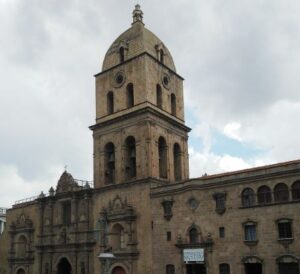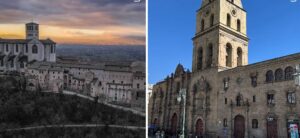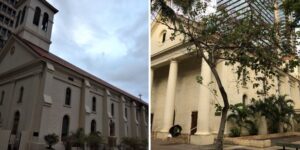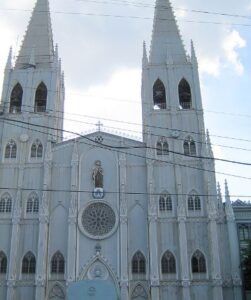10 Famous Cathedrals & Churches In Bolivia | Historical Churches In Bolivia

- By
- Aparna Patel
- |
- 23 May, 2023
- |
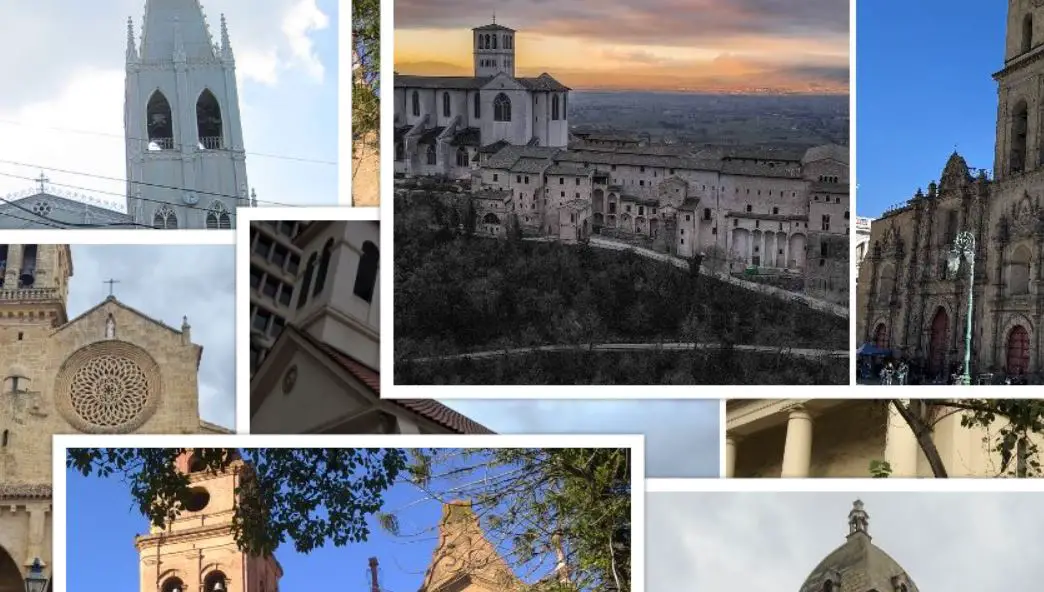
Since ancient times, Bolivia has been home to beautifully crafted cathedrals and churches with a rich and important history. From famous landmarks to historic locations, Bolivia is home to a variety of historical and architectural churches that are worth visiting for their remarkable style, grandeur, and unique architecture.
Here we will take a look at some of the most famous churches and cathedrals in Bolivia and explore their significance in the country’s culture and history.
Famous Historical Cathedrals & Churches In Bolivia To Visit
1. Cathedral of Santa Cruz de la Sierra
The Cathedral of Santa Cruz de la Sierra in Bolivia is the main church of the Archdiocese of Santa Cruz de la Sierra. It is located in the center of Santa Cruz de la Sierra, in the city of Santa Cruz de la Sierra, Bolivia. Construction of the original church began in 1720 and was completed in 1921. The church was originally constructed in the style of Spanish colonial architecture, and has since been renovated and expanded.
It is the largest church in the city and the largest cathedral in the nation. It measures 120 meters in length and 57 meters in width, and can accommodate up to 5,000 people. The imposing towers of the cathedral are visible from all corners of the city.
The architectural style of the cathedral is a neoclassical one, with interior decorations featuring Baroque and neoclassical elements. Inside the cathedral there are several paintings, many of them depicting scenes from the Bible.
The cathedral is home to several significant artifacts, including an 18th century altar, an ancient crucifix and the original painting of Jesus on the cross. The cathedral is also home to an active school which provides classes to local children in religion and the performing arts.
2. Temple of San Francisco, La Paz
The Temple of San Francisco in La Paz, Bolivia is an important religious symbol of the country’s colonial heritage. Built in the 17th century, the church is dedicated to Saint Francis of Assisi and is one of the oldest churches in the city.
The main facade of the church was built in the baroque style and features two towers with domes, while the rest of the building was constructed in the neoclassical style.
The interior of the church is filled with elaborate wooden furnishings and Baroque paintings, including a wooden crucifix over the altar. The church is open for Mass services on Sunday mornings and is a popular destination for tourists interested in exploring the colonial architecture and cultural heritage of La Paz.
3.San Pedro Church (Tiahuanaco)
Located near the ancient archaeological site of Tiwanaku, this church features a mix of Catholic and indigenous architectural elements.
The San Pedro Church is a colonial-era church located in the town of Tiwanaku, which is situated near the ancient ruins of the Tiwanaku civilization. The church is dedicated to Saint Peter (San Pedro in Spanish) and is a significant religious and cultural site in the region.
The San Pedro Church dates back to the 16th century and is an example of colonial architecture. It was constructed by the Spanish during the period of colonial rule in Bolivia. The church is made of adobe and stone, reflecting the architectural styles of the time.
Inside the San Pedro Church, you can find religious artwork, statues, and altarpieces that showcase the influence of Spanish colonial art. The church serves as a place of worship for the local community and attracts visitors interested in exploring the history and cultural heritage of the region.
It’s worth noting that the San Pedro Church is separate from the ancient archaeological site of Tiwanaku. The Tiwanaku ruins are the remnants of an ancient civilization that predates the arrival of the Spanish and Christianity in the region. The archaeological site of Tiwanaku is known for its monumental stone structures, temples, and other architectural features.
4. Basilica de San Francisco, Cochabamba
The Basilica of San Francisco is a colonial-style catholic church located in the city of Cochabamba, Bolivia. Dedicated to Saint Francis of Assisi, it was declared a National Monument in Bolivia in 1987.
The church was constructed in 1682 over an existing Mayan church from 1590. It has been remodeled several times until its current architectural style of the early 19th century.
The basilica is the major religious shrine of the city, especially during the celebrations of the Virgin of Urkupiña from January 8th to 25th, which gathers thousands of local faithfuls every year.
5. Cathedral of Our Lady of Peace, Sucre
The Cathedral of Our Lady of Peace is a major religious and historic site in the city of Sucre, Bolivia. The building originally opened in 1835, and it has undergone several renovations since then.
The Cathedral is notable for its interior artwork, which includes murals, altarpieces, and sculptures. Its Gothic-influenced exterior is also impressive, featuring two 81-metre towers.
The Cathedral is the seat of the Roman Catholic Archdiocese of Sucre, and it is a popular tourist attraction. Mass is held there each day, and several important cultural and religious events are celebrated there every year.
6. San Andres Apostol, Tarija
San Andres Apostol is a small city located in the province of San Lorenzo, in the department of Tarija, Bolivia. It is situated close to the Bolivian-Argentine border. With a population of around 4,000 inhabitants, San Andres Apostol is the largest city in the municipality and makes up 40% of the population.
San Andres Apostol is blessed with rich and fertile soil, so it enjoys a thriving agricultural sector. Corn, soybeans, wheat, and rice are the main crops grown. Additionally, San Andres Apostol produces wheat, barley, sorghum, alfalfa, fruits, and vegetables, resulting in an abundant supply of produce for both commercial and home-based consumption.
In San Andres Apostol, you can find a beautiful colonial-style church named after its patron saint, San Andres Apostol (Saint Andrew the Apostle). The church is a significant landmark in the town and attracts visitors who appreciate its historical and architectural value.
The town of San Andres Apostol is surrounded by scenic mountains, valleys, and vineyards. The region is known for its wine production, and you can explore vineyards and wineries to learn about the winemaking process and sample some of the local wines.
7. Cathedral Basilica of Our Lady of the Assumption (Potosí)
The Cathedral Basilica of Our Lady of the Assumption, commonly known as the Potosí Cathedral, is a historic Catholic cathedral located in the city of Potosí, Bolivia. Potosí is situated in the southern part of the country, in the department of Potosí.
The construction of the Potosí Cathedral began in 1564 and took several decades to complete. It is considered one of the most important examples of colonial religious architecture in Latin America. The cathedral was built in the Spanish Baroque style, with a combination of indigenous and European influences.
The exterior of the cathedral is characterized by its grandeur and intricate detailing. It features ornate facades, carved stone decorations, and elaborate towers. The interior of the cathedral is equally impressive, with beautifully painted ceilings, decorative altarpieces, and religious artworks.
One of the notable features of the Potosí Cathedral is its rich collection of religious art and artifacts. It houses numerous paintings, sculptures, and other religious objects that showcase the artistic talent of the colonial period. The cathedral is also known for its impressive collection of silverworks, including intricately designed silver altarpieces and ornaments.
The Potosí Cathedral holds significant historical and cultural importance. During the colonial era, Potosí was one of the richest cities in the world due to its silver mines, and the cathedral served as a symbol of the city’s wealth and power. The cathedral has witnessed various renovations and restorations over the years to preserve its architectural and artistic heritage.
Today, the Potosí Cathedral remains an active place of worship and a major tourist attraction. Visitors can explore its stunning architecture, admire its religious artworks, and learn about the history and culture of Potosí. The cathedral’s prominence in the city’s skyline makes it a prominent landmark and a symbol of Potosí’s rich colonial heritage.
8.San Sebastian Church (Chiquitos)
San Sebastian Church, also known as the Church of San Sebastián, is a historic Catholic church located in the town of San Sebastián de Velasco, in the Chiquitos Province of Santa Cruz Department, Bolivia. It is one of the six Jesuit Missions of the Chiquitos, a UNESCO World Heritage Site.
The San Sebastian Church was built during the 18th century as part of the Jesuit missions established in the region. The missions were designed to evangelize and educate the indigenous populations of the area. The church is considered a significant example of the Baroque architecture style, with a unique blend of European and indigenous influences.
The exterior of San Sebastian Church features ornate decorations and intricate carvings, showcasing the skilled craftsmanship of the time. The interior is equally stunning, with beautifully painted murals, altarpieces, and religious sculptures. The church’s architectural design incorporates elements of the indigenous Chiquitano culture, resulting in a distinctive and harmonious blend of styles.
San Sebastian Church, along with the other Jesuit Missions of the Chiquitos, was inscribed as a UNESCO World Heritage Site in 1990. The designation recognizes the exceptional cultural value of these mission towns and their architectural treasures. The missions have become popular tourist destinations, attracting visitors from around the world who come to admire the historical and artistic significance of the churches and experience the unique cultural heritage of the Chiquitos region.
Please note that the information provided is accurate up to my knowledge cutoff in September 2021. It’s always a good idea to verify any specific details or updates regarding San Sebastian Church, as there may have been changes or new developments since then.
9.Cathedral Basilica of Our Lady of Peace (La Paz)
Located in La Paz, it is the seat of the Roman Catholic Archdiocese of La Paz and one of the most important religious landmarks in Bolivia.
The Cathedral Basilica of Our Lady of Peace, also known as the Basilica of San Francisco, is one of the most significant religious landmarks in Bolivia and is located in the city of La Paz. Here are some key details about this notable cathedral:
- Location: The Cathedral Basilica of Our Lady of Peace is situated in the heart of the historic center of La Paz, Bolivia. It is located on Plaza Murillo, the main square of the city.
- Architecture: The cathedral showcases a mix of architectural styles, including neoclassical and baroque elements. Its exterior features white façades with intricate carvings and columns, while the interior boasts impressive vaulted ceilings, ornate altars, and stained glass windows.
- History: The construction of the cathedral began in the 1830s and took several decades to complete. It has undergone various renovations and expansions over the years. The cathedral serves as the seat of the Roman Catholic Archdiocese of La Paz.
- Importance: The Basilica of Our Lady of Peace is of great cultural and religious significance to the people of La Paz and Bolivia as a whole. It houses important religious relics, religious artwork, and statues, including the statue of Our Lady of Peace, the patron saint of Bolivia.
- Plaza Murillo: The cathedral is located on Plaza Murillo, a central square in La Paz that is surrounded by other important buildings, including the Presidential Palace and the Bolivian Congress.
- Visitors: The cathedral attracts both locals and tourists interested in exploring its historical and architectural beauty, as well as for religious worship and ceremonies.
10. Church of San Lorenzo, La Paz
The parish of the Church of San Lorenzo is located in La Paz, Bolivia. The Church of San Lorenzo, also known as the Iglesia de San Lorenzo, is a notable church situated in the city of La Paz. La Paz is the administrative capital of Bolivia and is known for its vibrant culture, historical sites, and stunning architecture.
The Church of San Lorenzo holds significance for its historical and cultural value in La Paz. It may have unique architectural features and historical background that are worth exploring. The best way to gather more specific information about the Church of San Lorenzo would be to consult local resources such as the tourism board, historical societies, or guidebooks that focus on La Paz.
The church, whose construction was completed in 1786, stands in the city’s Plaza San Francisco in the centre of the historical district. It is considered one of the most important monuments in the city and in the country as it was declared National Monument of Bolivia by the president of the Republic in 1973.
The church is built in a baroque style with various influences from the Spanish traditions of its historical importance. Its structure is marked by a double nave with a single dome and a large chapel coated with golden plaster. The church has three organs, two of which were made in 1700 and the third in 1800.
The facade of the Church of San Lorenzo is made of marble and stone. Several statues adorn the frames of the main door. Inside the church is adorned with several paintings depicting the biblical events of the life of Jesus Christ. These paintings are the work of renowned painters from the eighteenth century.
The parish of the Church of San Lorenzo is currently administered by the Teresian Society of La Paz, a non-profit institution dedicated to the works of mercy established in 1777. The religious services offered are mass (Sundays and Thursdays at 9 am) and confessions (Sunday from 10 am to 12 noon).
Search Posts
Latest posts
Popular posts
-
5 Mar, 2024
Why prohibit engine braking?
-
5 Mar, 2024
How to avoid drinking vodka?
